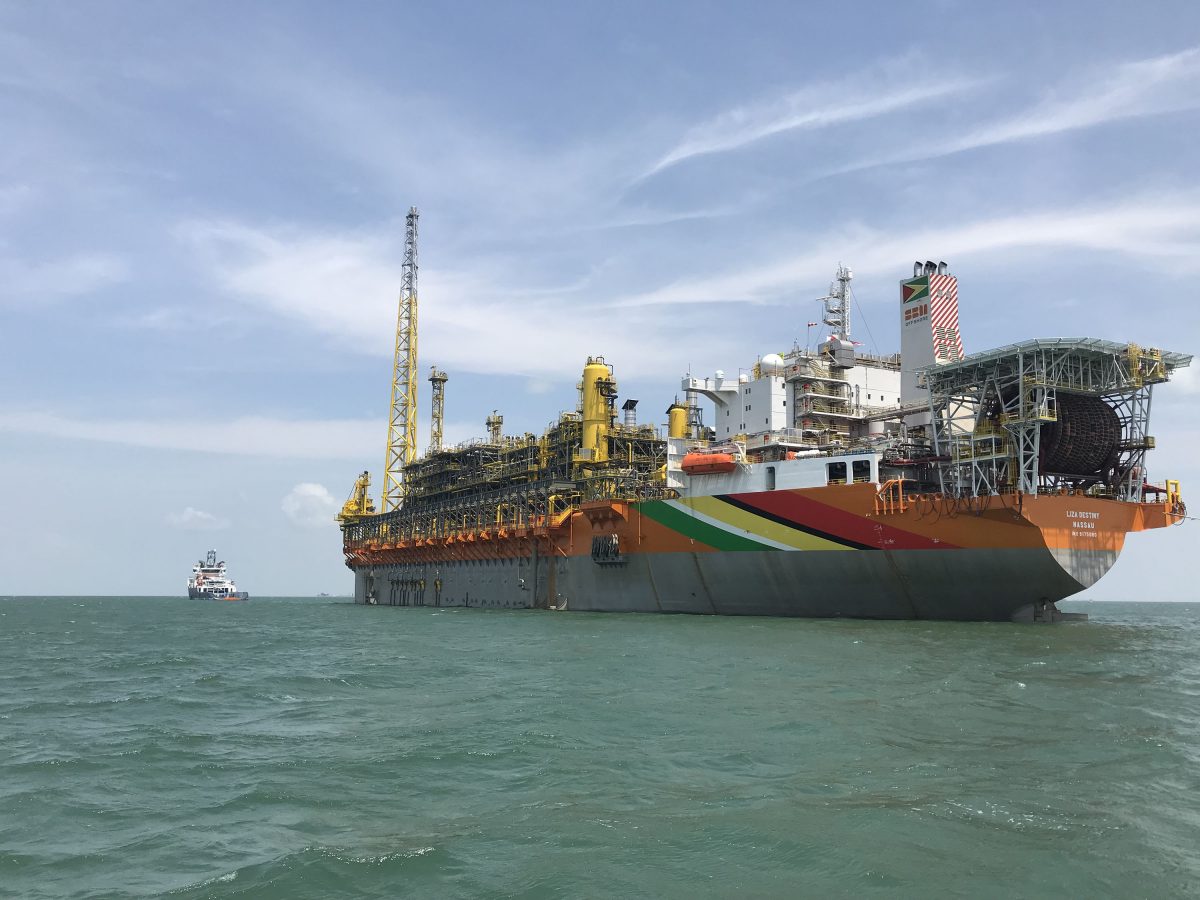Guyana has been paid US$55 million for its first cargo of crude oil sold in February and the country will receive royalties from production by ExxonMobil in its Liza-1 field on the offshore Stabroek Block next month.
The US$55 million paid for the one-million-barrel cargo puts the price for one barrel of oil at about US$55, Minister of Finance Winston Jordan has said.
Stabroek News was told that the sum was collected on March 13th and has been deposited into Guyana’s Natural Resource Fund (NRF) account being held with the New York Federal Reserve Bank.
Guyana is entitled to five cargoes or five million barrels of oil this year as part of its profit share with ExxonMobil and its partners, in addition to the 2 per cent royalty on all production, Head of the Depart-ment of Energy (DE) Dr Mark Bynoe has said.
According to Article 11.2 of the Petroleum Agreement for the Stabroek Block, in any month during which crude is produced and sold, a maximum of 75 percent of crude produced net of losses and operations, can be allocated to permissible recoverable costs incurred by the contractor. This volume of crude is referred to as cost oil. The remaining crude is referred to as profit oil and is to be split equally between the contractor and government.
The DE is responsible for overseeing the sale of the country’s share of oil and it has sold the first three cargoes to Shell Western Supply and Trading Limited and is now looking for a marketer for the other cargoes.
The Brent crude oil price for December, when production started in Guyana, was at a high of US$67.31 per barrel and in February, the average was US$56 per barrel. However, the figure dropped earlier this month and this week, the price slumped dramatically with the price yesterday being US$28 per barrel.
This newspaper reached out to the DE to determine the terms of sale agreed to in December but up to press time had not received a response. Stabroek News had also reached out to the department several times earlier this month for details on the sale but did not receive a response.
While Jordan did not go into the details of the sale, he said that royalties were not a part of the US$55 million collected and those monies are expected in April.
‘Every quarter’
Royalties, Bynoe has said, would be paid on gross production and the NRF Act sets out the timeframe for payment and management.
“One month after every quarter,” an official explained, while adding “it would not be until sometime in April that you would see that money in the NRF.”
And while the DE has said that it is committed to providing data on the sales and had promised the Guyana Extractive Industries Transparency Initiative (GY-EITI) that it would do so when the oil was sold and reported on, GY-EITI still has not received information on it.
“We have not received any information as yet. We are expecting it anytime now. I wrote asking him for details…I will be following up with the DE but as of now, no information but he [Dr. Bynoe] had promised,” head of the GY-EITI Dr Rudy Jadoopat told Stabroek News yesterday.
Nonetheless, Jadoopat believes that he will soon get the information from Bynoe and said that maybe current circumstances pertaining to the novel coronavirus pandemic has caused the delay.
He had also said that he believes that Shell will ensure that Guyana gets the best price for its oil.
The company was selected from nine listed international oil companies (IOCs) that were invited to express interest in the lifting and subsequent placement of the first three cargoes (three million barrels) of Guyana’s entitlement from the ExxonMobil-led Liza-1 oilfield. These included Stabroek Block operator ExxonMobil, and its co-venturers CNOOC and Hess, and other oil majors including Chevron, Total, ENI and Sol, which were required to submit written proposals. They were all subjected to a face-to-face meeting with the DE to present the full scale of their capabilities. The companies were also required to lay out the details of their proposals.
In the statement announcing the selection on December 24, the DE said the face-to-face interactions allowed for “robust interrogation and lengthy clarifications and questions.” This was referred to as “an integral part of the selection process, especially in the context of the nascent nature of Guyana’s experience commercialising crude oil.”
In explaining the basis for the selection of Shell, apart from the competitive pricing, the DE also cited the size, scale and global reach of the Shell trading operations; the company’s high level of integration between upstream, trading and downstream; Shell’s strong foothold in the Latin American markets and the size and scale of their shipping and storage operations in the region, allowing for multiple options on the Liza crude commercialization; the range of new grades Shell has recently introduced into the market and their willingness to share critical refinery information which Guyana needs in order to understand the behaviour of Liza crude on the market; and readiness to support the DE in operating the cargoes, while the DE is strengthening its structures and in-house crude commercialisation human resources.
The December 24 statement explained that the sale would be based on the Dated Brent Price Assessment, which reflects the tradable, spot market value of crude oil. (According to S&P Global, Platts Dated Brent is a benchmark for the price of physical North Sea crude oil. The term Dated Brent refers to physical cargoes of crude oil in the North Sea that have been assigned specific delivery dates.)
It also explained that the “short-term phase 1 process was necessitated by the accelerated timing of first oil, and the fact that Guyana’s first lift is anticipated in February 2020.” Further, the completion of the three cargoes is expected by mid-2020, by the end of which the quality of the crude and any operational issues around production are expected to stabilise.

